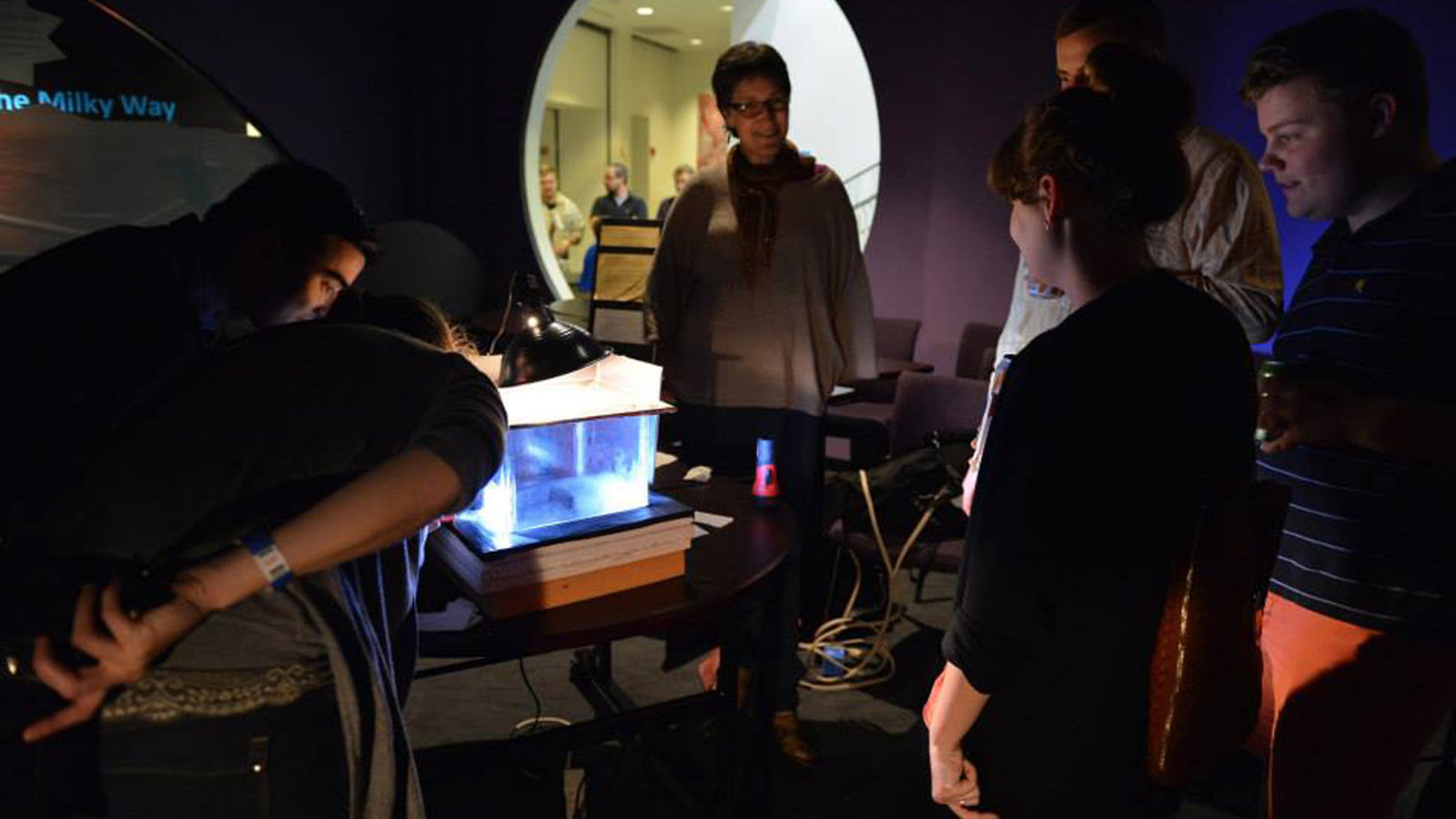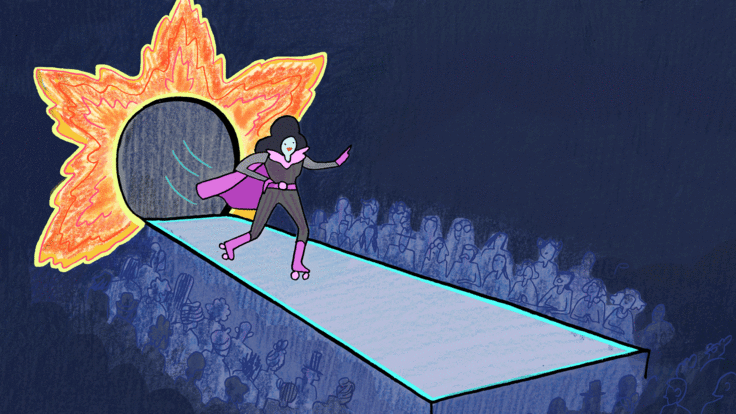Last week, three young physicists looked expectantly at an audience filling an auditorium at the Adler Planetarium in Chicago, waiting for the next question.
Everyone was there for Adler After Dark, a 21-and-up evening event held the third Thursday of each month to draw in a different crowd from the families and school groups that usually visit the planetarium. September’s theme was “Particle Party,” which brought physicists and educators together with a crowd of more than 1000 science enthusiasts, most in their 20s and 30s, over foggy drinks served with dry ice.
The physicists had given a presentation about the various types of particle physics research at Fermilab. Marcelle Soares-Santos, a member of an experiment seeking to understand the nature of dark energy, explained during her talk that about 5 percent of the universe is made up of visible matter—all of the rest is the more mysterious dark matter and dark energy.
“How distressing is it that we don’t understand 95 percent of the universe?” a man in the audience asked.
Soares-Santos smiled. “I think the word we use is ‘humbling,’” she said. “Also, for our generation, it’s exciting.”
Many of the guests agreed. After the panel ended, sisters Natalie and Andrea Crary, 25 and 23, approached Soares-Santos to find out more.
Natalie said the more we don’t know, the more discoveries we have left to make. “It’s true, we only understand so much,” she said. “But it’s going to stay put. And we get to shine our little flashlight around and figure it out.”
Andrea laughed at her sister’s tendency to share links to YouTube videos and Wikipedia articles about physics, but she said she understood the appeal.
“It seems so distant and unrelated, but [particle physics] is what you are,” Andrea said. She quoted a line from University of Cincinnati physicist Jason St. John’s presentation about particles and forces: “It’s the reason you can’t put your hand through your other hand.”
Educators around the planetarium showed off other puzzles that physics can explain, such as how cosmic rays leave wispy vapor trails in a cloud chamber (pictured above) and what happens when you put a marshmallow in a vacuum. Guests crowded around each demonstration.
Adler added a DJ and some drinks for the young adult crowd, but in the end it’s the same big ideas and tabletop science that captivates adults and school kids alike.







